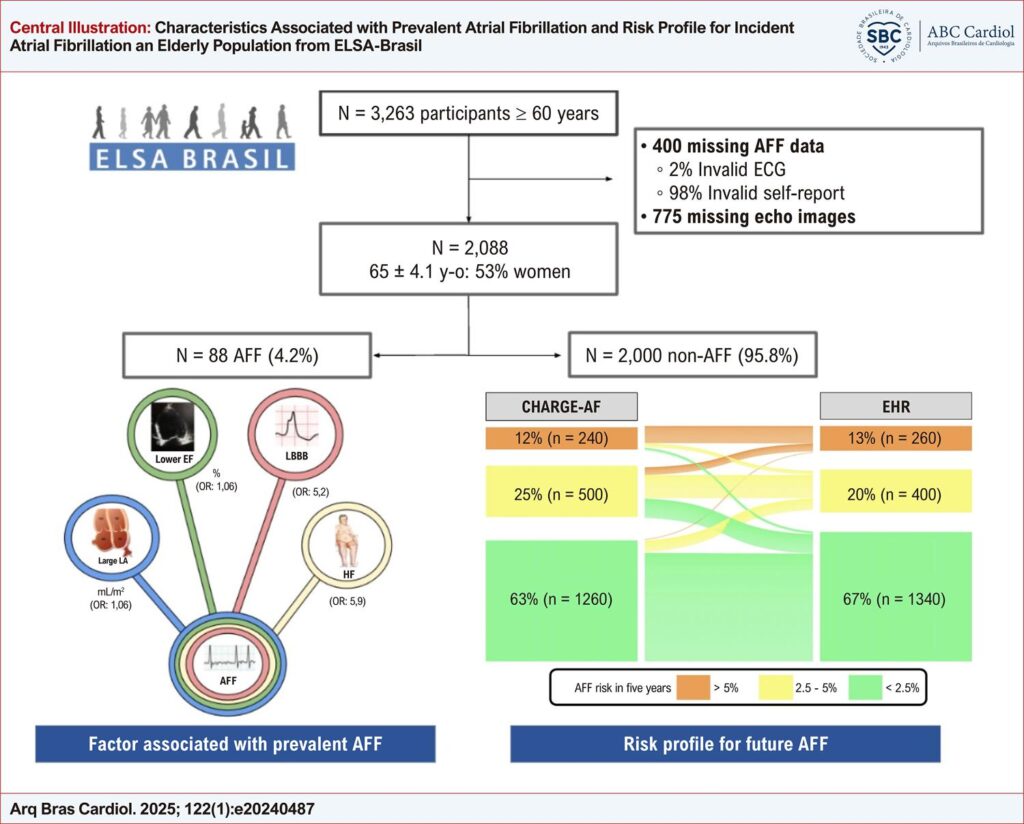Arq. Bras. Cardiol. 2025; 122(1): e20240487
Characteristics Associated with Prevalent Atrial Fibrillation and Risk Profile for Incident Atrial Fibrillation an Elderly Population from ELSA-Brasil
This Original Article is referred by the Short Editorial "Additional Data on Atrial Fibrillation from ELSA-Brasil Study".
Abstract
Background
Atrial fibrillation (AF) is an arrhythmia causing significant symptoms and raising the risk of complications.
Objectives
To evaluate the association of clinical, electrocardiographic, and echocardiographic parameters with prevalent atrial fibrillation or flutter (AFF) and assess the risk profile for incident AFF using the AF prediction scores CHARGE-AF and EHR in an elderly population from a developing country.
Methods
We included all participants in ELSA-Brasil aged 60 and over whose diagnosis of AFF could be defined through self-report or electrocardiogram and who had echocardiography performed at the study’s baseline. For statistical analysis, results with p values < 0.05 were considered statistically significant.
Results
Among the 2,088 participants (65 ± 4.1 years; 53% women), 88 (4.2%) had AFF. Those with AFF were older and had higher rates of heart failure (HF), previous myocardial infarction, left bundle branch block (LBBB), prolonged QT interval, supraventricular extrasystoles, and sinus bradycardia. They also had larger left atrial and left ventricular dimensions, and lower left ventricular ejection fraction (LVEF). Multivariable analysis showed that HF, LBBB, larger left atrium, and lower LVEF were independently associated with AFF. The 5-year risk for incident AFF was low (< 2.5%) in 63% and high (> 5%) in 12% of individuals according to the CHARGE-AF score, and low in 67% and high in 13% according to the EHR.
Conclusion
AFF was found in 4.2% of this older Brazilian cohort. AFF was linked to HF history, LBBB, left atrial dilation, and reduced LVEF. Additionally, 12% to 13% of patients in sinus rhythm were at high risk for AFF. Monitoring clinical, electrocardiographic, and echocardiographic parameters can aid in early identification of high-risk individuals.
Keywords: Aged; Atrial Fibrillation; Epidemiology; Gender Identify; Risk Factors
378

